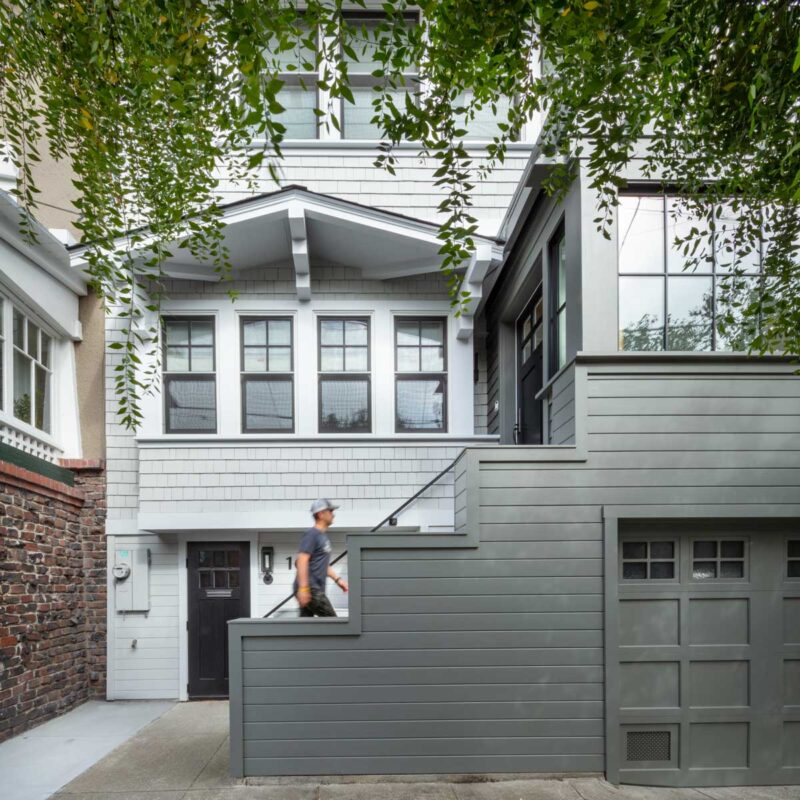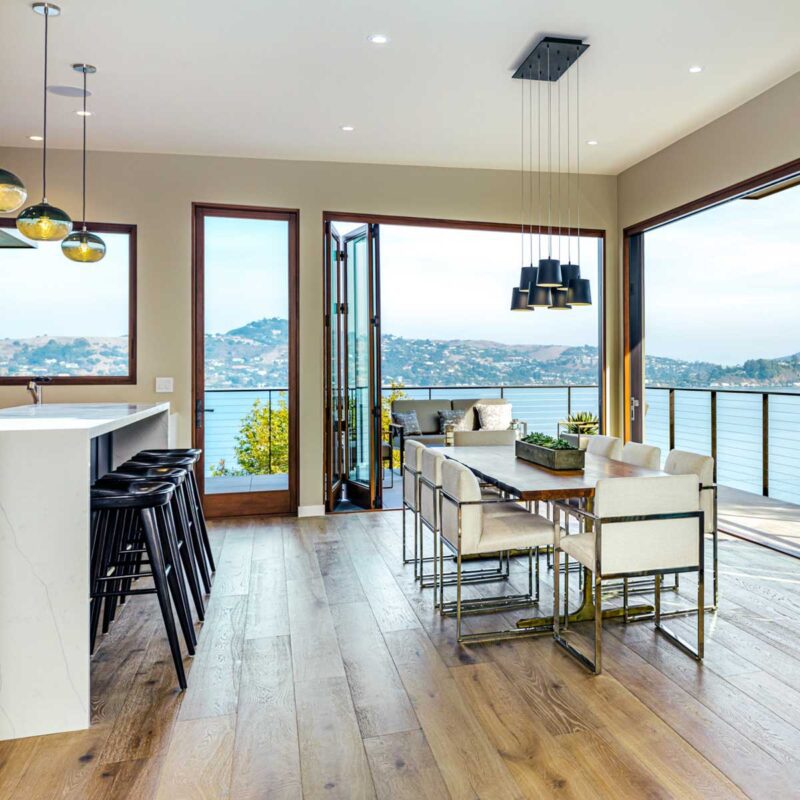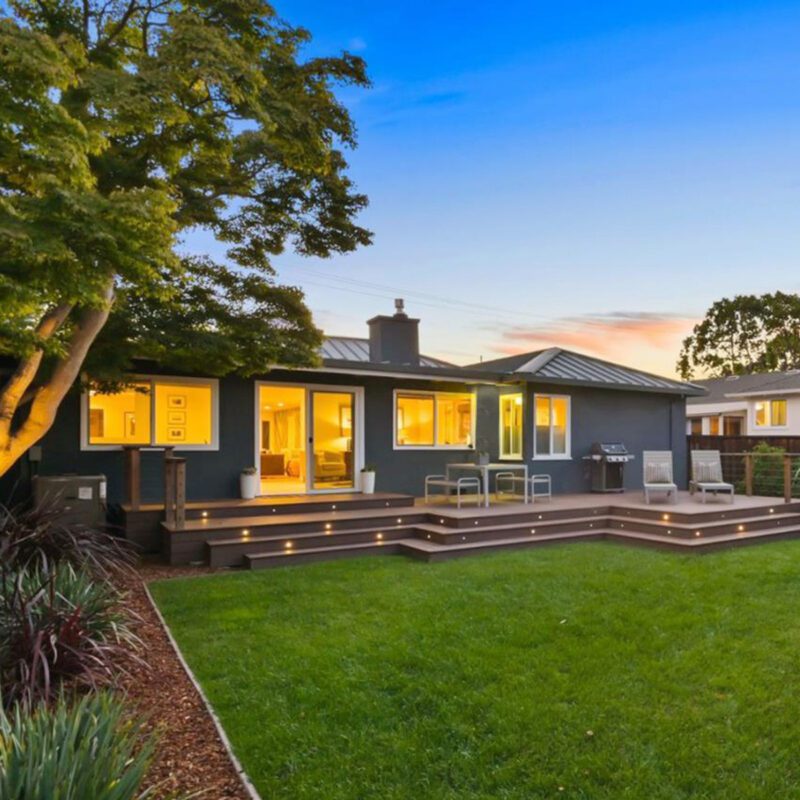1. Make a List
Even before you begin discussions with possible architects and contractors, think deeply about everything you might need to do. Is your roof close to needing replacing? Are those cracks in your driveway going to make you crazy once your house is remodeled and looks shiny and new? Make a list of everything that you might want to spend money on first.
The more you can literally close the door to a room, the more you can control your overall costs.
Either on your own or with your designer once you have chosen one, prioritize the items that you have to include and jettison the things you can live without. The key is to commit to a scope of work at the beginning stages of the project and to make the decision—not always easy—to NOT do those things on your wish list that don’t fit your budget. Lists like this can help you avoid the constant additions that can crop up during construction and that always increase costs.
2. Limit the Area of Work
When looking at what parts of your home you want to remodel, remember that touching a room in any way involves multiple layers of work. For instance, if you want to adjust a doorway between two rooms but otherwise don’t want to do any work in the adjacent room, the work will require both rooms to be protected and cleaned, both sides of the door to get new trim, baseboard, and patched and refinished flooring, and then it will all need to be painted. At the end of the day, you are doing a lot of work in both rooms for a small change. The more you can literally close the door to a room, the more you can control your overall costs.

3. Talk Budget Early, Talk Budget Often
A key to controlling costs on your remodel is to work with a team to build a detailed budget early in the design process, and not wait until after the design phase. By setting the budget early and checking in continuously as you go, every design decision is made with the budget in mind, and you can easily see the financial impact of each choice as you finalize design scope and quality.

4. How Contracts Can Help or Hinder
There are two primary types of contracts for remodels.
- A “time and materials” or “cost plus” contract means that the builder charges you for the time they work on the project and the materials they use or purchase, plus their markup. These are not legal in California for remodels, but they are in other states. They can appear cheaper than fixed-fee contracts initially and can be more transparent, but since you don’t know what the exact costs will be going into the project, they can also quickly expand beyond your budget.
- A fixed-fee contract, which we use in California, has built-in cost control. There is a set cost for a set scope of work that is agreed upon at the outset. For practical reasons, even fixed-fee contracts include some price flexibility with the use of allowances. Allowances are placeholder costs for materials that have not been chosen yet. So if there is a $3,000 allowance for tiles, choosing tiles that cost $3,000 or less will keep your cost on track. If you choose to splurge on more expensive tile, your cost goes up. The sooner you can make decisions that replace the allowances with fixed costs, the better you’ll be able to keep a handle on the overall budget.
If you know you have a hard time making or sticking to decisions, give yourself extra time to do so.

5. Do Your Best to Make Timely Decisions, and Stick to Them
Changing your mind is human, and we all do it. With construction, however, it can disrupt the process and create delays if final decisions aren’t made in a timely manner or if previously made decisions are changed. If you know you have a hard time making or sticking to decisions, give yourself extra time to do so and understand that changing your mind or not making a decision on-time will likely lead to additional costs and delays.
Just as with budgeting, choosing materials early helps keep costs under control because long lead times for ordering and receiving are always a possibility. Any team you are working with should give you plenty of lead time for decision-making, and should spread those decisions out so you are not doing them all in one weekend.

6. Contingencies Are There for a Reason
Every construction project has things that come up during the building phase but can’t be predicted. With this in mind, it’s a good idea to mentally set aside some additional as a contingency funds (10% of the budget is a good starting point but more may be necessary on complex projects) for those unexpected events. Clients often optimistically think that they won’t need a contingency and won’t include it in the budget. Don’t make that mistake. Contingencies are there for a reason. Things happen, and they are never free. Set aside the contingency and assume it’s going to be spent on the things you can’t control, not on the things you can say no to.
Peace of Mind and a Great Place to Live
Most people don’t come out of a remodel thinking, “I can’t believe how little I spent!” But that doesn’t mean that your renovation can’t be done on budget and that you can’t get the things you most want from it. Attention to details and discipline throughout the process, as well as working with a professional who is focused on giving you the best product within your means, will result in a home you love done for an investment you can live with.
One of our clients, Geoff J, said this when phase 1 of his project was done: “Working with this team was so smooth and within budget that I decided to move forward with phase 2.”
Click here to read more about the transformation of Geoff’s craftsman childhood home and how staying within budget let him do more sooner.



































